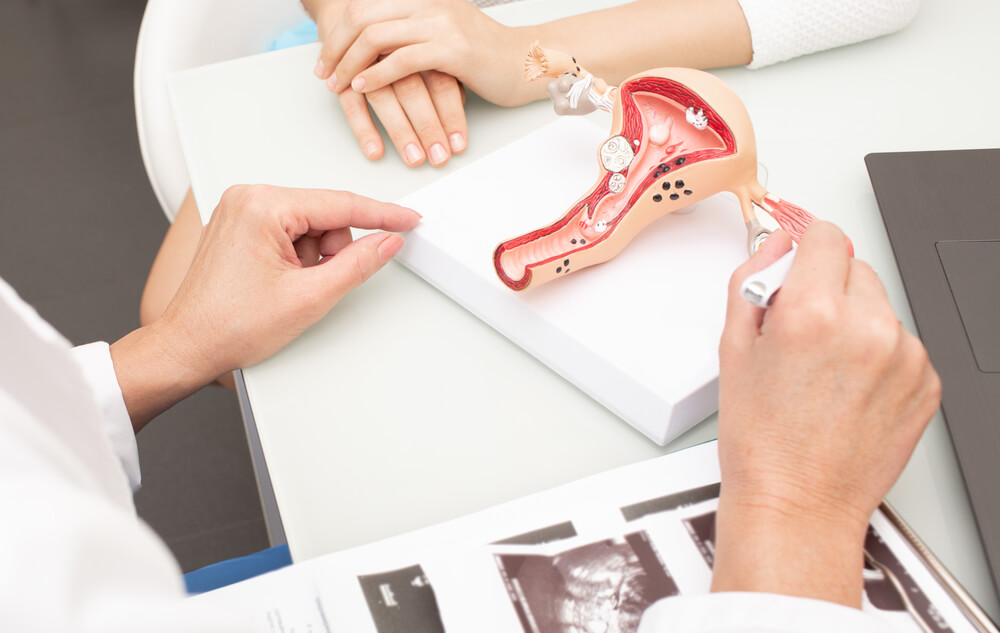Endometrial hyperplasia is a medical condition that affects the lining of the uterus, known as the endometrium. This article aims to provide an in-depth exploration of this condition, covering its causes, endometrial hyperplasia symptoms, and available treatment options.
University Park OBYGN is a medical center which offers consultations and different options for treatment of patients who suffer from endometrial hyperplasia symptoms. An experienced medical professional is a crucial link in the treatment path of this condition, so make sure you do proper research and find the most suitable option for you and your current needs.
What is Endometrial Hyperplasia?
Endometrial hyperplasia is a medical condition characterized by the abnormal thickening of the endometrial lining, the innermost layer of the uterus. This thickening results from an imbalance in hormonal levels, particularly an excess of estrogen without the counterbalance of progesterone. The endometrial lining undergoes cyclic changes throughout the menstrual cycle, but when these hormonal fluctuations become irregular, it leads to uncontrolled growth of endometrial cells.
This abnormal proliferation can manifest as a thickened lining, potentially progressing to endometrial hyperplasia. Recognizing this condition is essential, as it is associated with abnormal menstrual bleeding, pelvic pain, and other symptoms. Prompt diagnosis and appropriate medical intervention are crucial for managing endometrial hyperplasia and preventing potential complications.
Endometrial Hyperplasia Causes
The endometrial hyperplasia causes are multifaceted, often rooted in hormonal imbalances within the female reproductive system. One primary factor is an excess of estrogen relative to progesterone, disrupting the delicate hormonal equilibrium that regulates the menstrual cycle. Conditions such as polycystic ovary syndrome (PCOS) and obesity are linked to an increased risk of endometrial hyperplasia, as they can contribute to hormonal irregularities.
Prolonged exposure to high levels of estrogen without the counteracting influence of progesterone can lead to uncontrolled growth of the endometrial cells, ultimately resulting in hyperplasia. Understanding and addressing these underlying hormonal imbalances are crucial in comprehending the root causes of endometrial hyperplasia, providing a foundation for effective prevention and treatment strategies.
Endometrial Hyperplasia Symptoms
Recognizing the symptoms of endometrial hyperplasia is essential for early detection and prompt medical intervention. Here are some of the most common symptoms:
- Abnormal Menstrual Bleeding: Irregularities in menstrual cycles, including unusually heavy or prolonged periods, can be a key indicator of endometrial hyperplasia.
- Pelvic Pain or Discomfort: Women with endometrial hyperplasia may experience pelvic pain, discomfort, or a feeling of pressure in the pelvic region.
- Unusual Vaginal Discharge: Changes in vaginal discharge, such as increased or abnormal consistency, may be observed in individuals with endometrial hyperplasia.
- Pain During Intercourse: Discomfort or pain during sexual intercourse can be a symptom, highlighting potential disruptions in the normal uterine environment.
- Spotting Between Periods: Women with endometrial hyperplasia may notice spotting or light bleeding between their regular menstrual cycles.
- Changes in Menstrual Patterns: Any significant alterations in the regular menstrual patterns, such as a sudden increase or decrease in frequency, can be indicative of the condition.
- Menstrual Irregularities in Postmenopausal Women: Postmenopausal bleeding or any form of menstrual irregularities in women who have already undergone menopause may raise concerns about endometrial hyperplasia.
- Abdominal Swelling or Bloating: Some individuals may experience abdominal bloating or swelling as a result of the abnormal thickening of the endometrial lining.
- Fatigue: While not exclusive to endometrial hyperplasia, persistent fatigue may accompany other symptoms, warranting further investigation.
- Frequent Urination: Pressure on the bladder due to changes in the uterus can lead to an increased frequency of urination in individuals with endometrial hyperplasia.
It is important to note that these symptoms can vary in intensity, and the presence of one or more should prompt consultation with a healthcare professional for a thorough evaluation and diagnosis, leading to a timely diagnosis and appropriate treatment.

Diagnosis of Endometrial Hyperplasia
The diagnosis of endometrial hyperplasia involves a comprehensive approach, combining medical history analysis, physical examination, and various diagnostic tests. A crucial step in the diagnostic process is obtaining a detailed medical history, wherein the healthcare provider assesses the patient’s symptoms, menstrual patterns, and any relevant risk factors. A pelvic examination may be conducted to evaluate the overall health of the reproductive organs. However, the definitive confirmation of endometrial hyperplasia often requires a biopsy of the endometrial tissue.
This procedure allows for the microscopic examination of the cells, determining the presence of abnormal growth. Additionally, imaging studies such as transvaginal ultrasound may be utilized to measure the thickness of the endometrial lining, aiding in the assessment of the condition’s severity.
The combined insights from these diagnostic approaches are crucial in providing an accurate diagnosis, guiding subsequent treatment decisions, and ensuring the best possible outcomes for individuals with endometrial hyperplasia. Regular monitoring and follow-up may also be recommended to track any changes in the condition over time.
Endometrial Atrophy Symptoms
It is important to distinguish between endometrial hyperplasia and endometrial atrophy, another condition affecting the endometrium. While hyperplasia involves excessive growth, atrophy is characterized by a thinning of the endometrial lining. Endometrial atrophy symptoms may include vaginal dryness, pain during intercourse, and irregular bleeding.
Understanding the differences between these conditions is vital for healthcare professionals to make accurate diagnoses and tailor treatment plans accordingly.
Treatment Options
The management of endometrial hyperplasia depends on various factors, including the severity of symptoms, the extent of abnormal cell growth, and the individual’s reproductive goals. Treatment approaches may range from conservative measures to more invasive options, including surgical interventions. Here are some options you might want to consider:
- Hormonal Therapy: Hormones such as progestin, a synthetic form of progesterone, helps regulate the growth of endometrial cells, balancing hormonal levels.
- Dilation and Curettage (D&C): In cases of simple or complex hyperplasia without atypia, a D&C procedure may be performed to scrape and remove excess endometrial tissue.
- Hysterectomy: In more severe cases or when conservative measures are ineffective, a hysterectomy, involving the removal of the uterus, may be recommended to eliminate the risk of recurrence.
- Lifestyle Changes: Addressing underlying factors such as obesity through lifestyle modifications, including a balanced diet and regular exercise, can help manage hormonal imbalances.
- Oral Contraceptives: Birth control pills containing a combination of estrogen and progestin may regulate menstrual cycles and reduce the risk of endometrial hyperplasia.
- IUD with Progestin: Intrauterine devices (IUDs) releasing progestin directly into the uterus can provide localized hormonal control, reducing the risk of abnormal endometrial growth.
- Endometrial Ablation: A procedure involving the removal or destruction of the endometrial lining, endometrial ablation can be considered for those who wish to preserve the uterus but have completed their family planning.
- Regular Monitoring: For milder cases, especially in premenopausal women, healthcare providers may opt for a “watch-and-wait” approach, closely monitoring the condition and intervening if necessary.
Alternative Therapies
Some individuals explore complementary approaches like acupuncture or herbal supplements, although their effectiveness for endometrial hyperplasia is not well-established, and consultation with a healthcare professional is crucial.
It is essential for individuals diagnosed with endometrial hyperplasia to discuss these treatment options with their healthcare provider, considering individual health factors and reproductive goals to determine the most suitable course of action. Regular follow-up appointments are often recommended to monitor progress and adjust the treatment plan as needed.
Conclusion
In conclusion, endometrial hyperplasia is a complex yet manageable condition affecting the female reproductive system. Recognizing the symptoms, understanding the causes, and seeking timely medical attention are crucial steps towards effective diagnosis and treatment.
With advancements in medical science, individuals diagnosed with endometrial hyperplasia can explore various treatment options to address their specific needs and improve their overall health and well-being. To make this happen, call our center right away and schedule a consultation. Your health is our number one priority!


